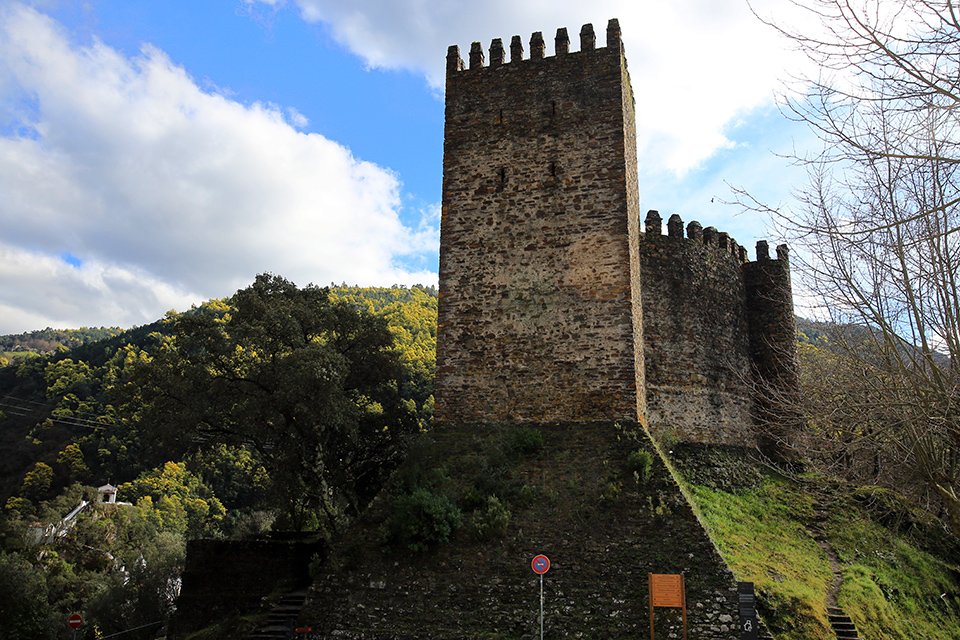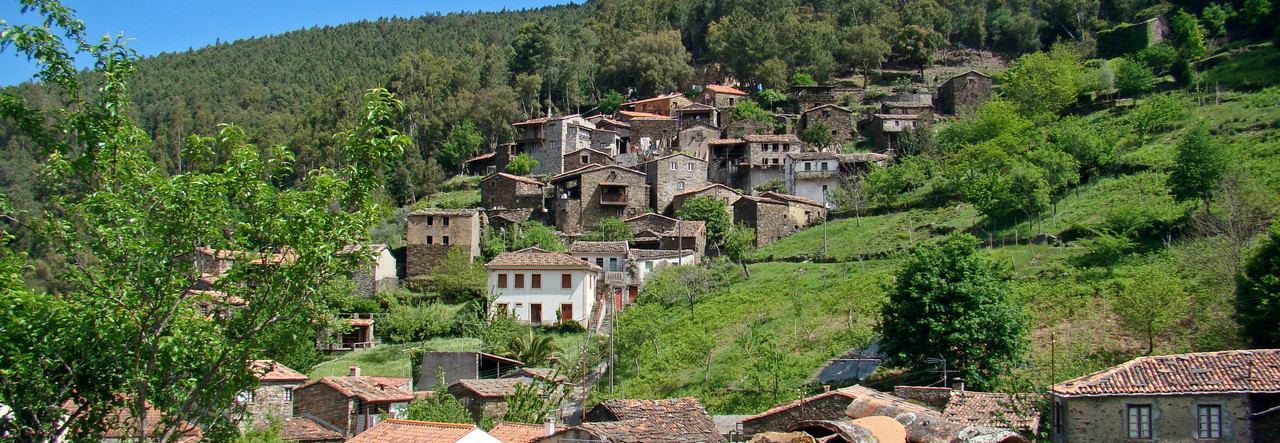The oldest archaeological remains of the municipality testify to the presence of man in the region since the period of the Roman occupation of the Iberian Peninsula. Today we also know that in the Serra and the Ceira Valley there were important gold farms in these times.
The origin of Lousã causes us to retreat back to the time of Muslim rule, when a king or emir named Arunce would have founded the castle to protect his daughter Peralta while he was campaigning in North Africa. Coimbra was, at that time an important Moçarabic center, with a living culture and an economic activity much more developed than that of other villages north of the current territory Portuguese.
It was in the 18th century that Lousã prospered the most, moving from a modest and uncharacteristic village to a flourishing settlement, with streets paved with new buildings of good layout, where the noble families lived. The local creation of the paper industry, The Paper Mill of Penedo, and its products from here were of such quality, that they provided the prestigious typography of the Companhia de Jesus de Coimbra, clients who joined the Academic Typography and the Mint.

Other industries that were implanted in the municipality were spinning and energy production, contributed to the creation of mills, liqueurs, sawmills, locksmiths and several other industries, which diversified the agricultural vocation of the municipality, to the detriment of the primary sector. Emigration and immigration to Lisbon have brought to Lousã a new perspective in development in several areas.
The area of the municipality has varied considerably. Inrecent decades, the space occupied by the village almost doubled, gaining new areas, always unobstructed and of correct layout, where the modern housing districts, primary and secondary schools, the fire station, the new palace of justice among other infrastructure and equipment needed for the inhabitants and visitors of Lousã were built.
The functional relations observed between the various municipalities of this territory and, in particular, with Coimbra, help to understand the recent demographic and economic evolution of the municipality. In the economy, activities related to the tertiary and secondary sectors predominate. Agricultural activities are now mostly associated with self-consumption. Activities responsible for economic dynamics are paper processing, electrical components, olive oil and wines and liqueurs. Services and trade stand out for tertiary activities.

Tourism contributes strongly to the development of the municipality with a strong flow of visitors, either considering the Serra da Lousã and the Schist Villages, or the rich and varied historical, archaeological, architectural and natural heritage. Lousã has been consolidating itself as a reference destination for Nature Tourism, Adventure and Cultural, existinga diversified offer that also covers a network of walking routes, three river beaches, mountain bike, trail and downhill circuits, the set composed of lousã castle, the historic center and the emblazoned houses, as well as two municipal museums.
The Serra da Lousã for the variety and extreme richness of its fauna and flora, is part of the Natura Network, a European network of protected sites that ensures biodiversity, conserving and restoring natural habitats, plants and wildlife in order to maintain the typical characteristics of the sites. It also includes in the National Ecological Reserve, a biophysical and diversified structure that, through conditioning to the use of areas with specific ecological characteristics, ensures the protection of ecosystems and the permanence and intensification of biological processes indispensable to the balanced framing of human activities.
The Municipality of Lousã is rich in cultural, gastronomic and craft traditions that are maintained and preserved both through the production of handicrafts and commercial innovation that the municipality's entrepreneurs give to traditional products. The new uses and enjoyments of old customs are revealed as business opportunities, by the genuineness and authenticity of regional products.
At the level of handicrafts stands out the basketry, works in shale, ceramics, embroidery, jewelry, paper work and woodwork. With regard to traditional products, we highlight the liqueurs - namely licor Beirão, - the wines - especially the Wines of Quinta de Foz de Arouce - the sweets, the honey DoP Serra da Lousã and the sausages.
Lousã connects to Coimbra through EN 17, making the journey in just over 25 minutes. It also has access to the IC 6 and IC 7 as well as the A1 Lisbon-Porto motorway.The foz de Arouce variant allows the connection of Lousã to the EN17, faster, safer and more convenient. which took on even more importance with the crossing with IC3 (which starts in Tomar), as well as the A13, in the Lamas - Miranda do Corvo area and with the eventual extension of EN342 to IC6 (Lousã - Góis - Arganil - Coja - IC6). These links give the county greater accessibility and centrality.
Source: Lousã Town Hall